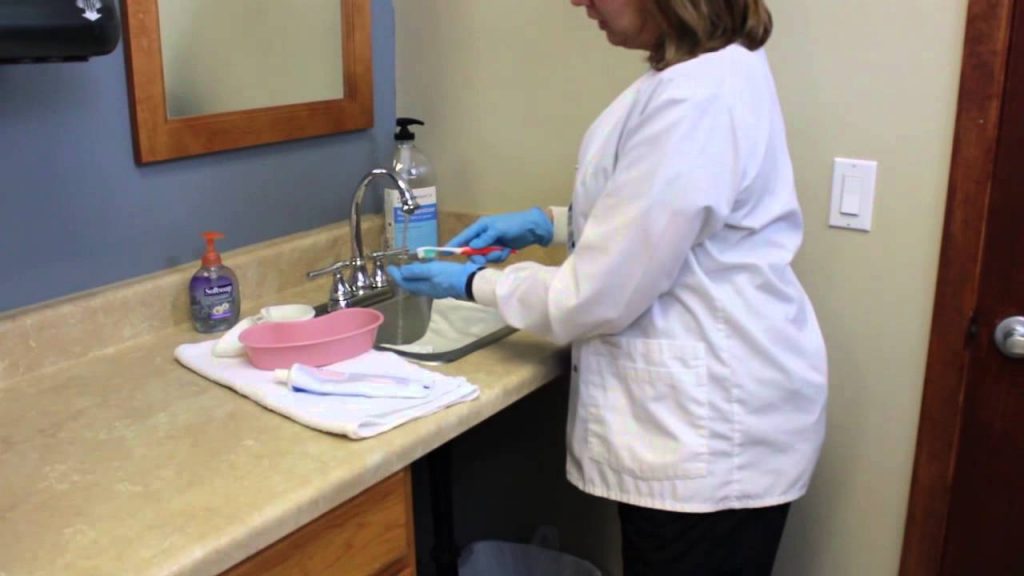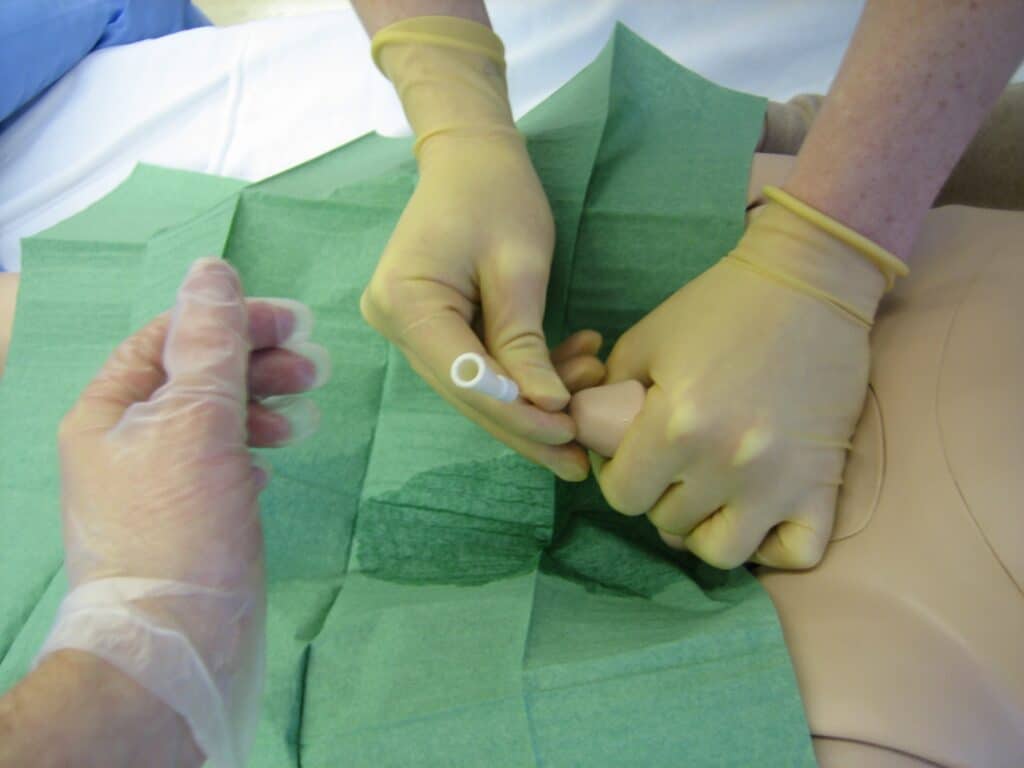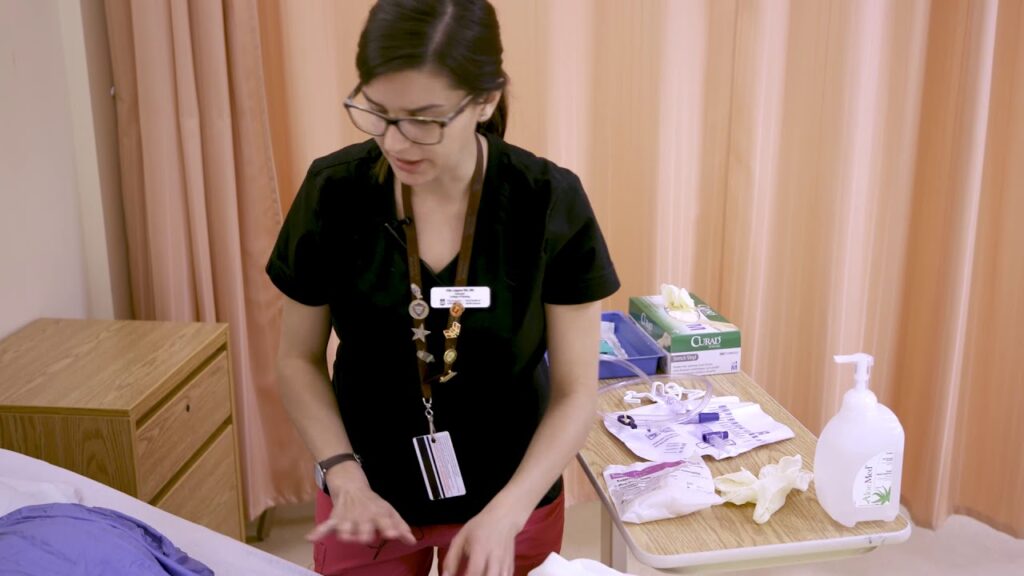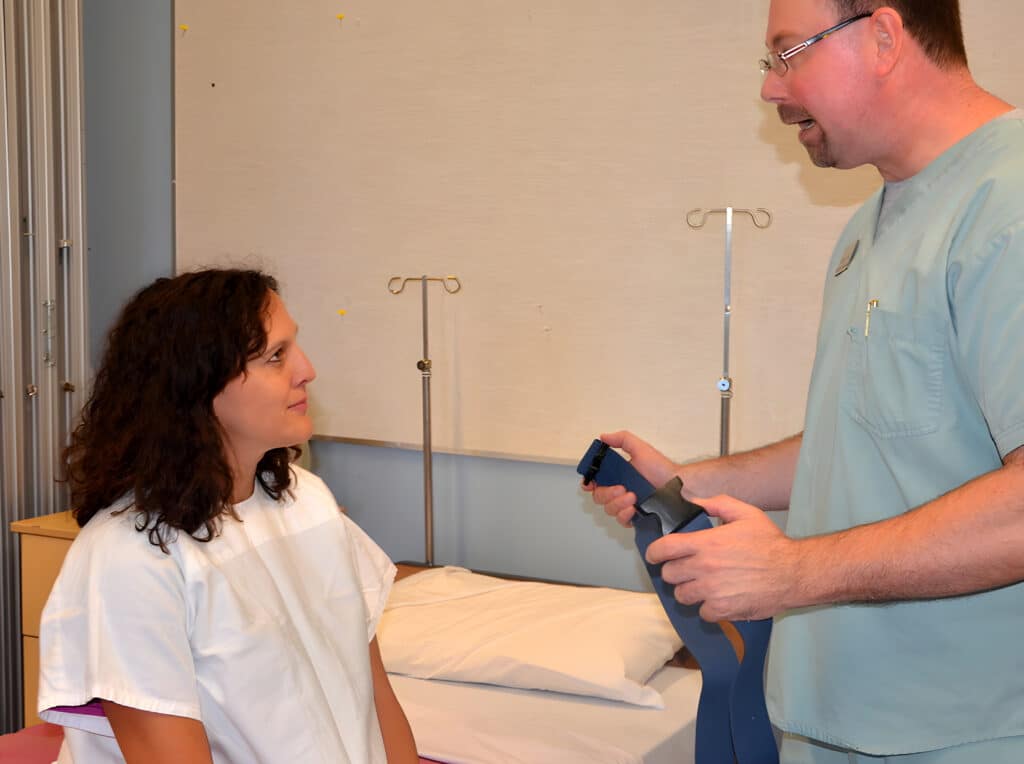Written by Hollie Finders, RN
Hollie Finders is a registered nurse with years of experience working in the health care field. She has degrees in both biochemistry and nursing. After working with patients of all ages, Hollie now specializes in pediatric intensive care nursing. Hollie’s LinkedIn
Perineal Care Procedure
Equipment needed: gloves, washbasin, soap, washcloths, bath towel, waterproof pad, and soiled laundry bag.
- Perform hand hygiene and put on gloves.
- Explain the procedure to the patient and ask for their assistance in following directions. Provide privacy.
- Raise the bed to a comfortable working height.
- Fill a basin with warm water. Ensure the water is a comfortable temperature.
- Assist the resident in spreading her legs.
- Gently clean around the perineal area, including the inner thighs and outside the labia.
- With one hand, separate the labia.
- With the other hand, wipe down the center of the inner labia with a soapy washcloth. Only wipe in a front to back motion.
- Using a clean area of the washcloth for each stroke, wipe from front to back on both sides of the vulva.
- Rinse the entire area with a clean washcloth. Pat dry with a bath towel.
- Assist the patient onto her side to expose the buttocks.
- Wash the buttocks and the anal area using the same front to back technique. Rinse and pat dry.
- If needed, change the linens and/or place a clean waterproof pad underneath the patient.
- Assist the resident into a comfortable position and lower the bed.
- Place all used washcloths, towels, and linens into a soiled laundry bag.
- Dispose of the water and clean the washbasin.
- Remove gloves and perform hand hygiene.
- Document the procedure in the patient’s chart and report any changes in the patient’s condition to the nurse.
Important Information
Perineal care should be performed during a bath, after using the bedpan, and/or after incontinence. Proper technique is important for maintaining hygiene, preventing infection, and avoiding skin breakdown. Because of the close proximity between a woman’s urethra, vagina, and anus, it is essential to only wipe in a front to back motion. Wiping in the opposite direction is associated with a greater risk for developing a urinary tract infection [1].
It is important to be respectful and professional when providing this care. Many patients find this procedure awkward and uncomfortable. If a patient is able to perform this care independently, then allow them to do so and provide them with privacy.
By: Hollie Finders RN
References







